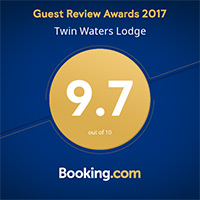The Whanganui Inlet is probably the least known of the scenic attractions of Golden Bay. The Whanganui Inlet road starts nearby: just turn left after Pakawau (by the hall) about 5 km north of Twin Waters Lodge. After a few km through “the cut” you will come to the north end of the Inlet. A road to the right will take you to the scenic Kaihoka Lakes.
The Whanganui Inlet is best seen at high tide. The Inlet is the second largest Inlet in New Zealand. The road that makes its way down the eastern side was built by hand during the depression (1930s), intended to be the first part of a road down the West Coast to Karamea. It was never completed. On a sunny summer’s day, the reflections of the hills and the flowering rata and other species make this a most attractive drive. It is a great venue for picnicking, boating and fishing.
About two-thirds of the way down the Inlet is the wharf, a base for some fishing operations. Just after the end of the Inlet, you will come to Maungarakau – home to the Maungarakau swamp, an important habitat for the giant Powellophantia carnivorous snails native to New Zealand. Maungarakau was an important centre in early Golden Bay history for its flax mill, gold mining and coal mine.
Past Maungarakau, the road winds out to the West Coast at Patarau, a wild windswept typical West Coast beach. Beyond Patarau, the road continues to the Anatori river. This area is scenic with beach and river landscapes and Nikau forest. It is possible to ford the Anatori river when not in flood, if you have a suitable vehicle, and continue down the coast to the Tiraumawiwi River, where the road ends.
The southern third of the inlet is a marine reserve, so no fishing is allowed there. The rest is a wildlife management reserve, which means no commercial fishing – so it is great for recreational fishers!









